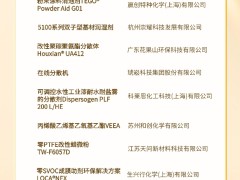沙特目前有超過50%的電力來自原油燃料
沙特正尋求轉向可再生能源和天然氣,以騰出原油用于出口
到2030年前,可再生能源和天然氣可以幫助沙特阿拉伯每天騰出多達100萬桶的原油用于出口
據美國油價網7月22日報道,商業網站《能源情報》援引業內消息人士的話報道說,沙特希望用天然氣發電和可再生能源取代石油液體發電,通過減少發電中直接使用的原油,到2030年前,沙特每天可騰出多達100萬桶原油用于出口。
沙特依賴原油和燃料油發電,在炎炎夏日的幾個月里原油和燃料油的直接燃燒發電大大增加。
了解沙特能源結構的消息人士告訴《能源情報》,沙特是世界上最大的原油出口國,目前國內51%的電力來自原油和石油液體,49%來自天然氣。
根據《能源情報》的消息,沙特的計劃也是其到2060年凈零碳排放目標的一部分,這個計劃要求高達50%的電力來自可再生能源,高達55%的電力來自天然氣。
根據總部位于利雅得的聯合石油數據庫(JODI)發布的統計數據,5月份,由于中東氣溫上升和對空調的需求開始激增,沙特燃油發電的原油日需求量提高到58.2萬桶,比4月份日增18.5萬桶,比去年同期水平日增13.1萬桶。
分析人士說,今年夏天,沙特發電廠直接燃燒原油和石油產品的速度將加快,這可能導致其國際市場的原油供應減少。
減少直接用于發電的原油和石油產品將提高沙特的原油出口能力,沙特已經表示,其原油日產能上限將在2027年達到1300萬桶。
沙特王儲薩勒曼日前表示,沙特已承諾到2027年前將原油日產能提高到1300萬桶以上,屆時沙特將沒有額外的原油產能。
李峻 編譯自 美國油價網
原文如下:
Saudi Arabia Has Big Plans To Boost Oil Export Capacity
· Saudi Arabia currently generations more than 50 percent of its electricity from petroleum fuels.
· The Kingdom is looking to pivot to renewables and natural gas to free up oil for export.
· Renewables and natural gas could help Saudi Arabia free up as much as 1 million barrels per day of oil for exports by 2030.
Saudi Arabia expects to have freed up to 1 million barrels per day (bpd) of oil for exports by 2030 by cutting its direct oil use in power generation as it looks to replace petroleum liquids with gas-powered generation and renewables, Energy Intelligence reports, quoting industry sources.
Saudi Arabia relies on crude and fuel oil for electricity generation and cranks up direct crude and fuel burns during the scorching summer months.
Saudi Arabia, the world’s top crude oil exporter, currently generates 51 percent of its electricity from petroleum liquids, and 49 percent from natural gas, sources with knowledge of the Saudi energy mix told Energy Intelligence.
The Saudi plan, also part of its 2060 net-zero goal, entails having up to 50 percent of electricity coming from renewable energy and up to 55 percent from gas, according to Energy Intelligence’s sources.
In May, as temperatures rose and demand for air conditioning in the Middle East begins to surge, Saudi Arabia raised its direct use of crude oil to 582,000 bpd, up by 185,000 bpd from April, and 131,000 bpd above year-ago levels, according to data from the Joint Organisations Data Initiative (JODI).
This summer, direct crude and product burn at power generation plants in Saudi Arabia has accelerated, which could leave lower available crude supply for international markets, analysts say.
Reducing direct oil and petroleum liquids burned for power generation would boost the crude oil export capacity of Saudi Arabia, which has already said that its production capacity limit will be 13 million bpd when it’s reached in 2027.
Saudi Arabia will not have additional capacity to increase production above the 13 million bpd it has pledged to have by 2027, Saudi Crown Prince Mohammed bin Salman said last week.
Referring to oil supply to global markets, the Crown Prince said that “The Kingdom will do its part in this regard, as it announced an increase in its production capacity to 13 million barrels per day, after which the Kingdom will not have any additional capacity to increase production.”
免責聲明:本網轉載自其它媒體的文章及圖片,目的在于弘揚石化精神,傳遞更多石化信息,宣傳國家石化產業政策,展示國家石化產業形象,參與國際石化產業輿論競爭,提高國際石化產業話語權,并不代表本網贊同其觀點和對其真實性負責,在此我們謹向原作者和原媒體致以崇高敬意。如果您認為本站文章及圖片侵犯了您的版權,請與我們聯系,我們將第一時間刪除。







